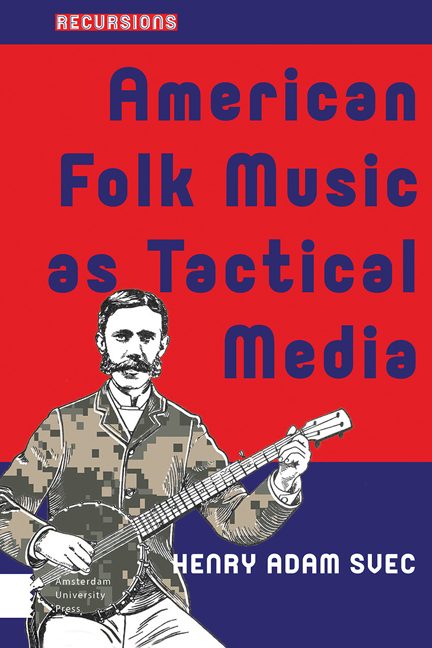Book contents
- Frontmatter
- Contents
- Acknowledgments
- Introduction
- 1 Alan Lomax’s Deep Rivers of Digitality
- 2 Pete Seeger’s Time-Biased Tactics
- 3 Bob Dylan’s Noisy Faces
- 4 A Folk Approach to Imaginary Media
- 5 Another Authentic Folk Is Possible
- 6 American Folk Music as Strategic Media
- Epilogue
- Notes
- Lyrical Credits
- References
- Index
4 - A Folk Approach to Imaginary Media
Published online by Cambridge University Press: 28 January 2021
- Frontmatter
- Contents
- Acknowledgments
- Introduction
- 1 Alan Lomax’s Deep Rivers of Digitality
- 2 Pete Seeger’s Time-Biased Tactics
- 3 Bob Dylan’s Noisy Faces
- 4 A Folk Approach to Imaginary Media
- 5 Another Authentic Folk Is Possible
- 6 American Folk Music as Strategic Media
- Epilogue
- Notes
- Lyrical Credits
- References
- Index
Summary
In both the documents of the mid-century American folk revival and the tactical media ‘movement’, distinctions are consistently eroded between expert and amateur, theory and practice. For both Pete Seeger and (for instance) Geert Lovink, the point of singing or writing is so that others might in turn put the art and ideas to work—into their own concerts, songs, interventions, or disturbances (a process that might happen quickly or take a long time). There is thus an energetic and DIY hastiness to issues of Sing Out! and Broadside, magazines that published songs with an eye to their utility for the voices of their readers; we see this open spirit of generosity in the works of Lovink and the Critical Art Ensemble as well, the latter of which included instructions on Game Boy hacking in one of their books. Of course, a ‘tinkerer’ impulse has also been evident in media-archaeological approaches to media history, wherein the generation of artworks and/or impossible technologies has been considered as intellectually valuable an endeavor as scholarly publication.
While Media Artist in Residence at the University of New Brunswick in Fredericton, Canada (20142015), I attempted to allow these apparently divergent but in fact fellow-travelling tributaries to converge into a single organization, which I called ‘The New Brunswick Laboratory of Imaginary Media Research + Design’. Inspired by the Hootenannies and sing-alongs but also by the distributed-in-solidarity networks, databases, and writing machines generated by this complex tradition, my intention was to map the creative utopianism of the long American folk revival more directly onto the problematics of media-archaeological design, in a perhaps tactical way. Instead of swapping songs, or writing topical ballads, what if we got together and sang new channels? Might the collaborative act of discussing or sketching impossible communication technologies be conceived as a tactical media manoeuvre? Would we need to cover new territory, like solitary artists and scholars are obligated to do, or could we just find value in the ‘singing’ together itself?
As Jussi Parikka observes, the laboratory is a site of imagining that ‘[shifts] the coordinates of what is possible’. Several scholars of imaginary media history have similarly looked to the design of communication technologies (which all, at one point in time, were mere fictions) and the relationship between such designs and sociocultural pasts, presents, and futures.
- Type
- Chapter
- Information
- American Folk Music as Tactical Media , pp. 97 - 106Publisher: Amsterdam University PressPrint publication year: 2017



